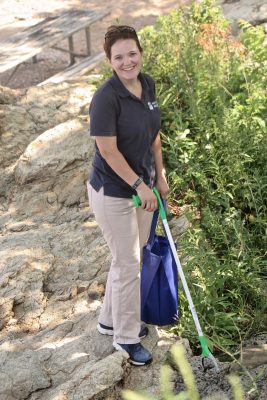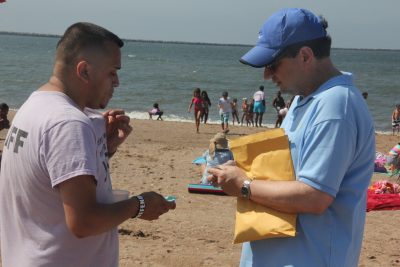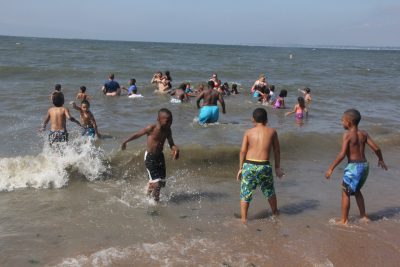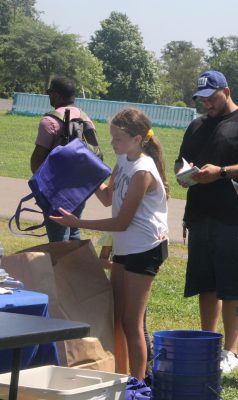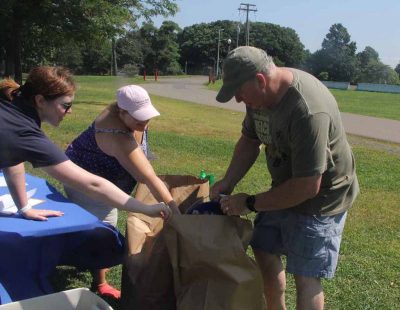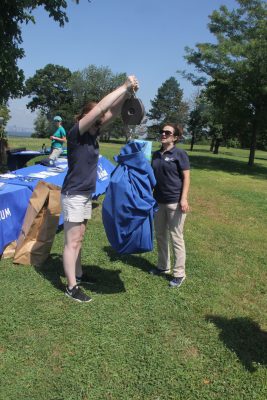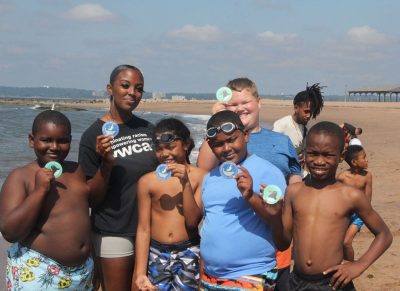
By Judy Benson
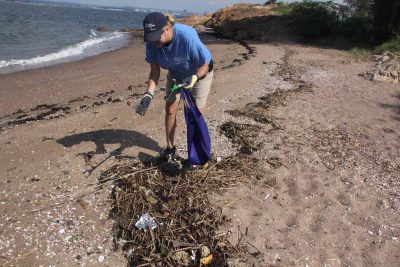
New Haven – One hundred pounds of litter – everything from deflated Mylar balloons and monofilament fishing line to plastic bottles, Styrofoam cups, straws, cigarette butts and lots of bottle caps — filled the buckets and reusable bags of 35 volunteers Thursday at Lighthouse Point Park as they helped launch a campaign to keep plastic trash out of Long Island Sound.
“My husband and I grew up down here, so we just wanted to come and help out,” said Lisa Ratti, who came with her husband Salvatore and their daughters Kylie, 13, Courtney, 11, and Rosalie, 4, from their home in Newington to work with the other volunteers in picking up trash.
The two-hour cleanup on a bright, windy August day at the popular city beach and picnic area was the start of this year’s “Don’t Trash Long Island Sound – Break the Single-Use Plastic Habit” campaign sponsored by the Long Island Sound Study, Connecticut Sea Grant and Mystic Aquarium. Now in its third year, the campaign this year expanded with four groups joining in the kick-off event – The Connecticut Fund for the Environment/Save the Sound; Audubon Connecticut; The Nature Conservancy’s Connecticut chapter; and SoundWaters, which sponsored cleanups at the same time at two Stamford parks.
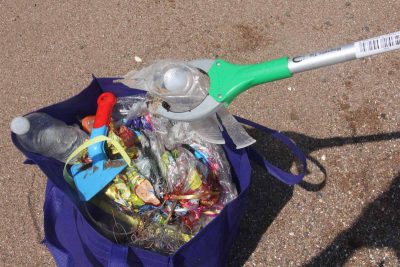
“When we arrived, the park and beach looked clean, but when we took a closer look we saw the tiny pieces of plastic, cigarette butts, fishing wire and other debris that can be so damaging to seabirds, fish and other animals,” said Robert Burg, communications coordinator for the Long Island Sound Study, a bi-state restoration effort sponsored by the EPA, Connecticut and New York. “It was great to see so many volunteers that did not take that trash for granted and helped us to protect the Sound’s wildlife.”
The cleanup coincided with an Interfaith Service Day in New Haven declared by Mayor Toni N. Harp. Dozens of teens were among volunteers working with seven community groups throughout the city on various projects.
MaryEllen Mateleska, director of education and conservation at the aquarium, said keeping the Sound clean requires everyone’s attention.
“Protecting valuable resources like Long Island Sound is a community effort, and yesterday 35 volunteers, ranging from ages 4 to 70, became part of this effort by collecting 100 pounds of trash in two hours from the New Haven coastline,” she said Friday. “Not only was harmful trash removed from the Sound, but as this group scoured the beach with trash grabbers and bags in hand, they served as a model of what engaged citizens can look like to other park patrons.”
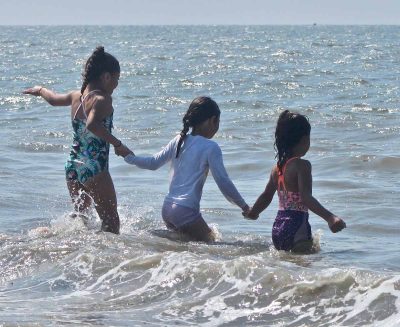
Among those there to witness the cleanup were about 60 elementary school-aged youth from the YWCA summer camp in New Britain. As they jumped and splashed in wind-tossed seas, Burg approached their teachers Taraea Ellis and Justin Del Rio to offer colorful “Protect Our Wildlife” stickers for each of the campers. The stickers, intended for reusable water bottles and travel mugs, show three Long Island Sound species – the American oystercatcher, harp seal and tautog (also called blackfish) with the message: “Don’t Trash Long Island Sound – Break the Single Use Plastic Habit.”
Along with the stickers, the campaign also includes seven weeks of social media posts leading into International Coastal Cleanup Day on Sept. 21. The posts are highlighting positive steps people are taking to embrace alternatives to throwaway plastics. The hashtags #DontTrashLISound, #LISound and #SingleUsePlastic are being used on the posts. The campaign generated 82,000 Facebook and Twitter impressions in 2017 and 135,000 in 2018, and a further increase is expected this year.
Volunteer Karri Beauton, who is also an animal rescue volunteer at the Mystic Aquarium, filled her bucket in about an hour of combing the sandy and grassy areas of the park. While finding trash wasn’t hard, she said, there was more to be found in the out-of-the way places than in the obvious ones.
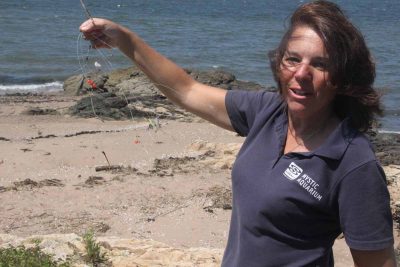
“I think people are starting to be more conscientious of plastic trash and littering,” she said.
Another volunteer from the aquarium, Dale Wolbrink, ended up getting tangled in several feet of discarded monofilament line, with the fishhook and sinkers still attached. Wolbrink, the aquarium’s senior director of public relations, noted how the episode gave her a taste of what wildlife experience when they are entangled by fishing line and require rescue and rehabilitation by aquarium staff.
Judy Preston, Long Island Sound Study outreach program coordinator for Connecticut Sea Grant, said the event demonstrated how much plastic is in the environment and the importance of working to get rid of it.
“It was a great day to bring attention to how plastics – bottles, straws, bags, monofilament – all show up on our Long Island Sound beaches,” she said. “It’s not just an eyesore. Plastics can entangle birds, choke sea turtles when they think a floating bag is an edible jellyfish, and ultimately break down into micro-pieces where they are ingested by sea life, making a lousy substitute for food. ‘Don’t Trash Long Island Sound’ is great advice that benefits us all – especially our local wildlife.”
Judy Benson is the communications coordinator at Connecticut Sea Grant.
